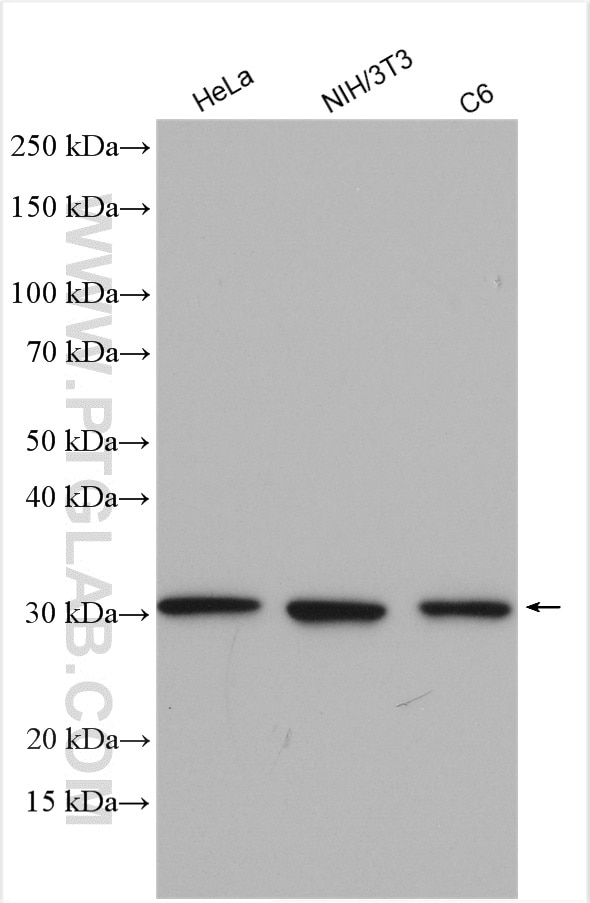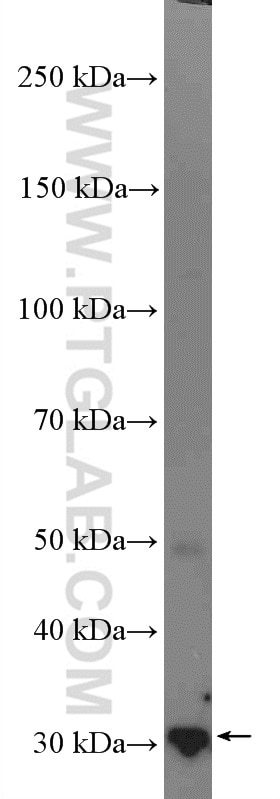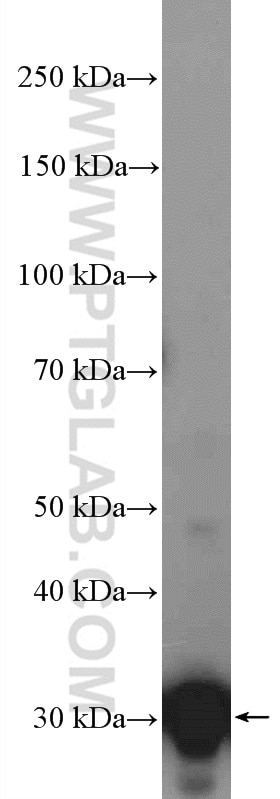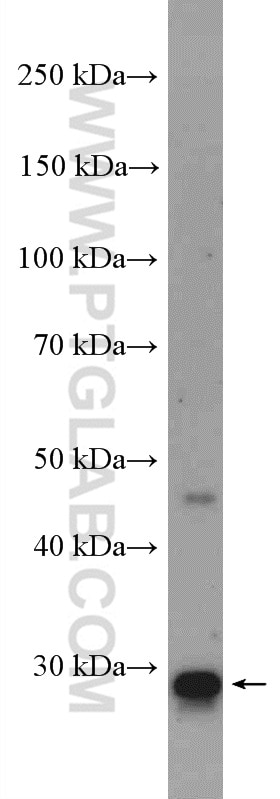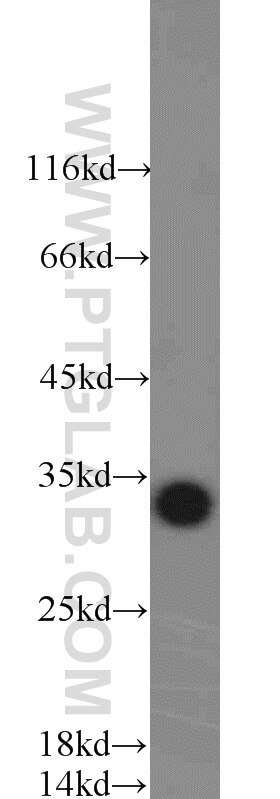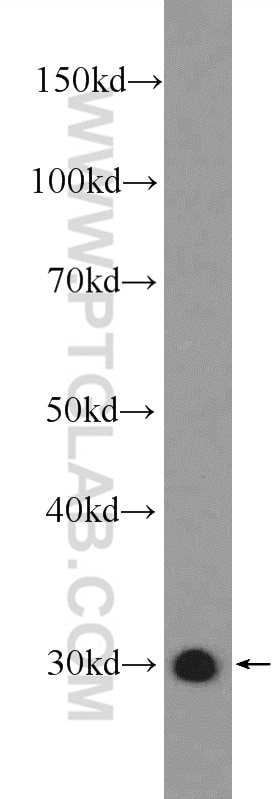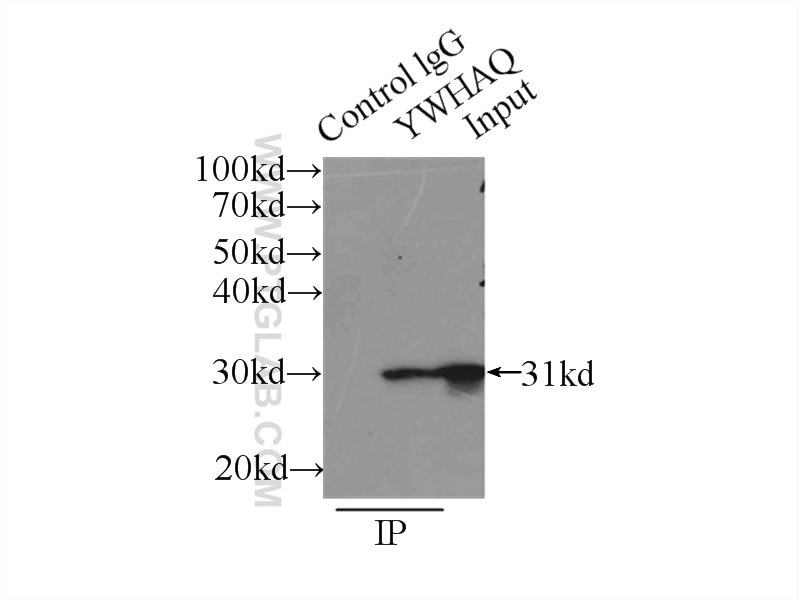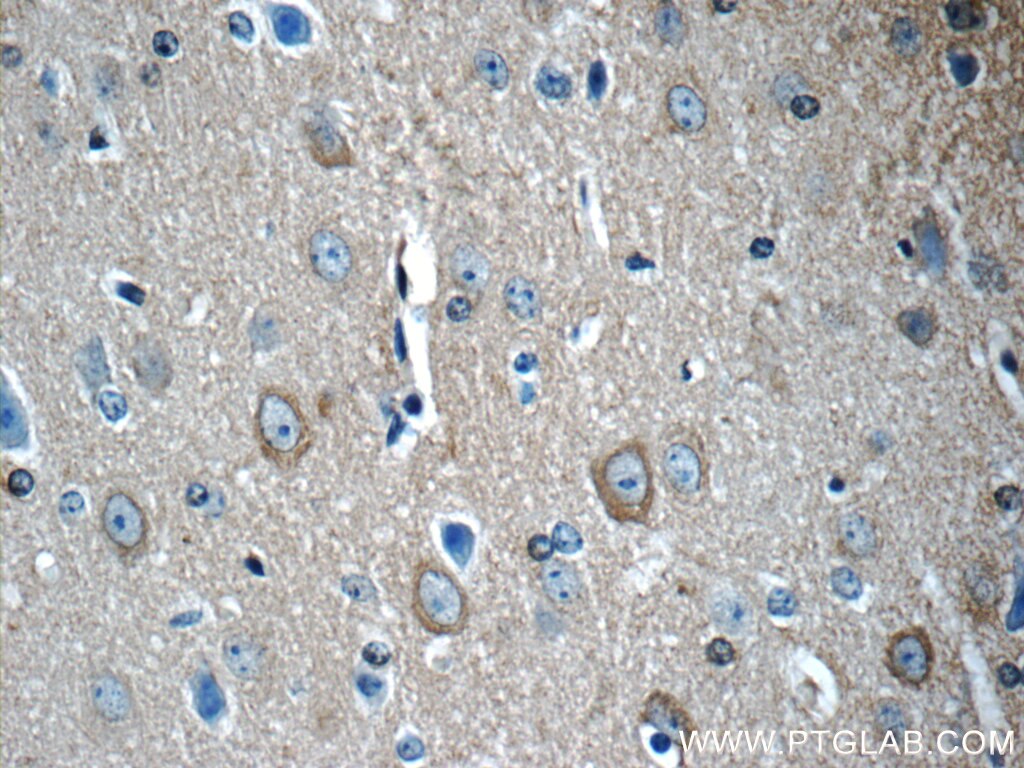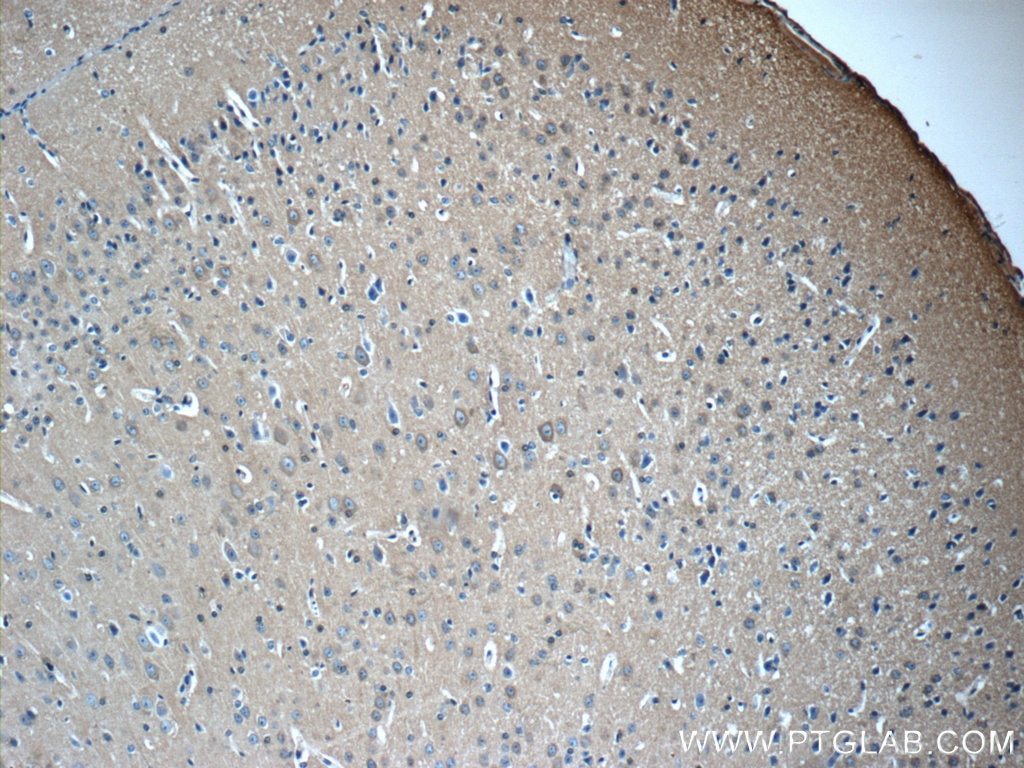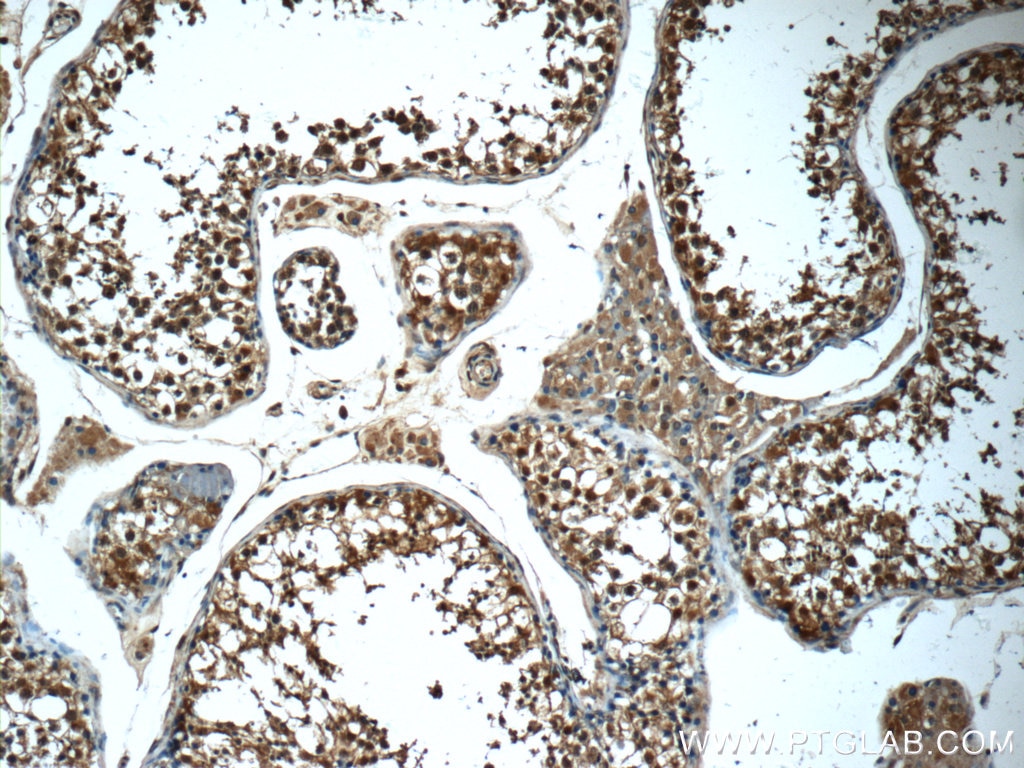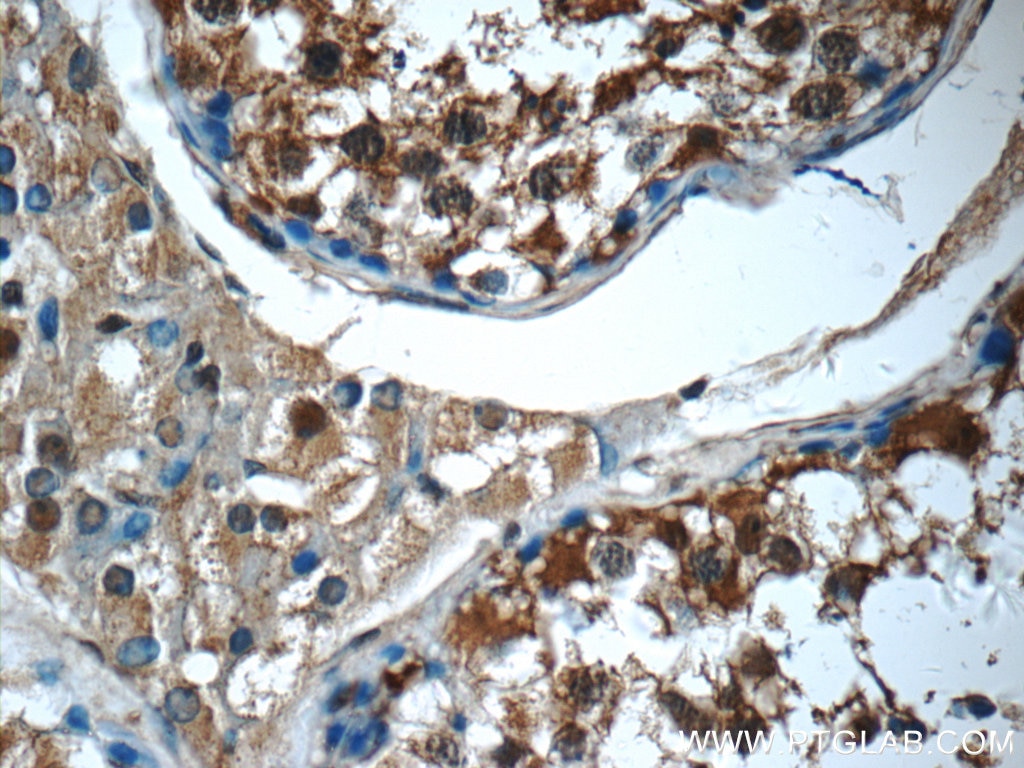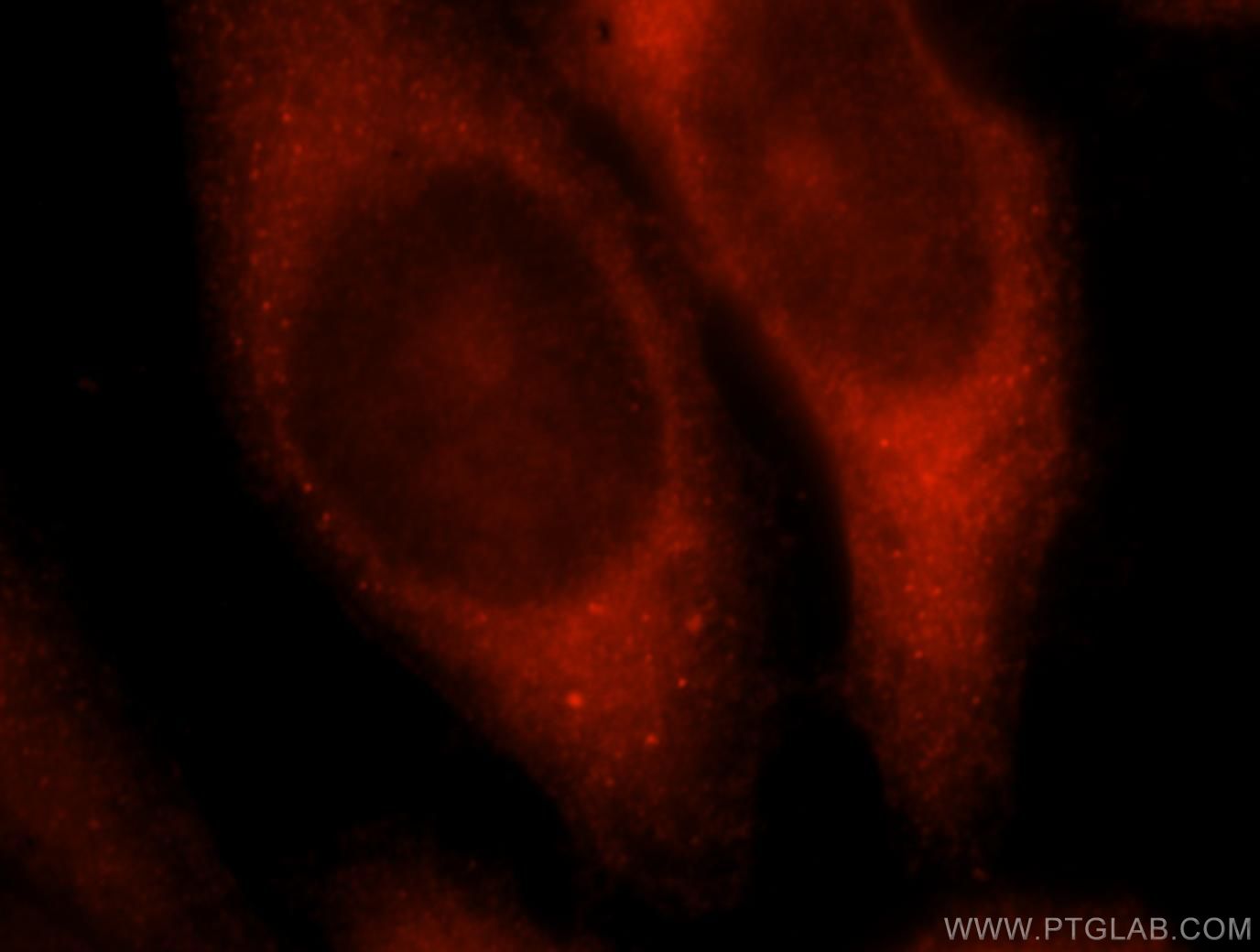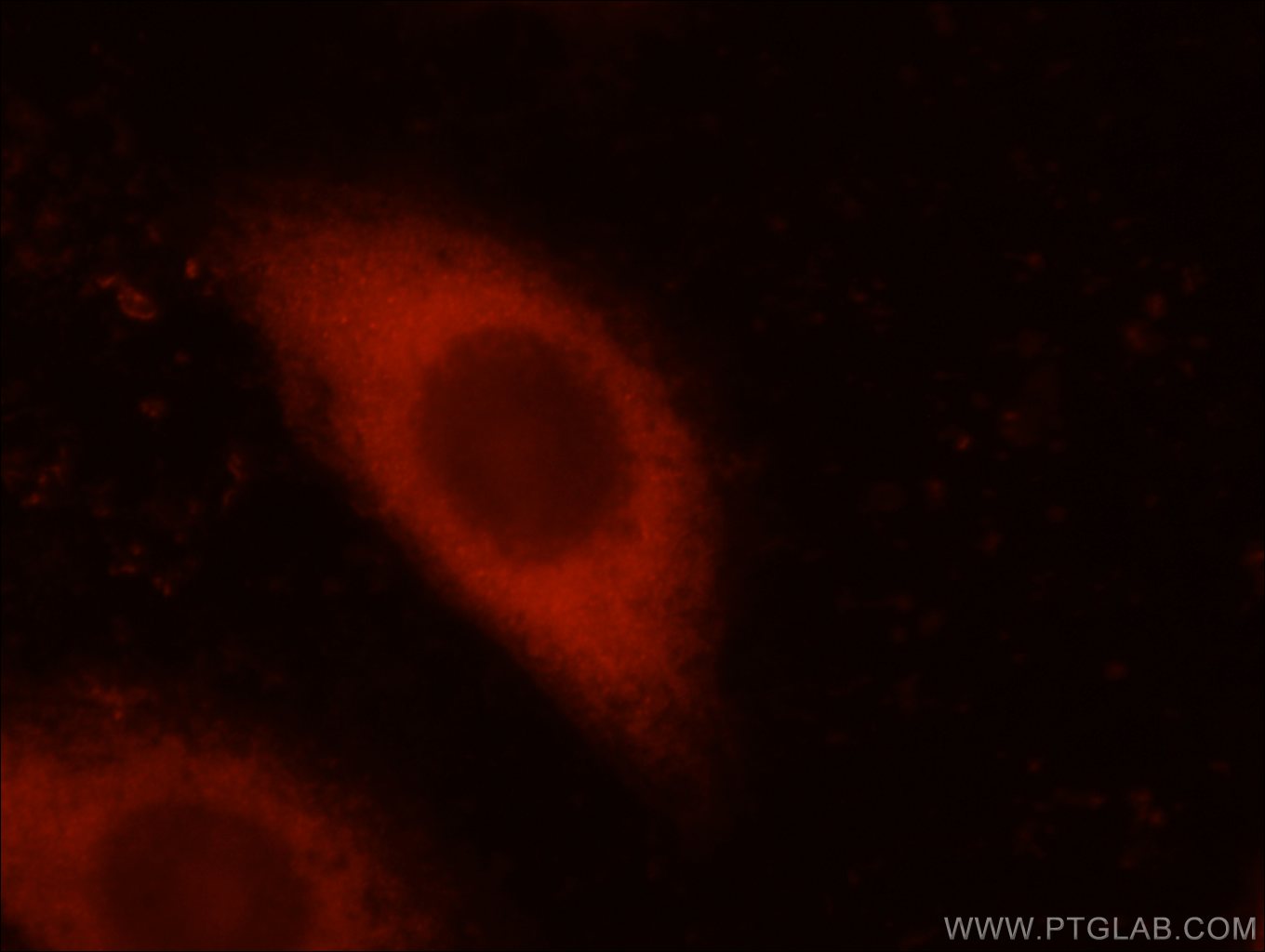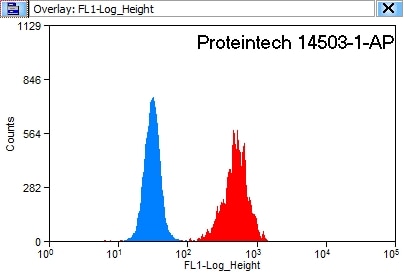- Featured Product
- KD/KO Validated
14-3-3 Polyklonaler Antikörper
14-3-3 Polyklonal Antikörper für FC, IF, IHC, IP, WB, ELISA
Wirt / Isotyp
Kaninchen / IgG
Getestete Reaktivität
human, Maus, Ratte
Anwendung
WB, RIP, IP, IHC, IF, FC, CoIP, ELISA
Konjugation
Unkonjugiert
Kat-Nr. : 14503-1-AP
Synonyme
Galerie der Validierungsdaten
Geprüfte Anwendungen
| Erfolgreiche Detektion in WB | HeLa-Zellen, C6-Zellen, Jurkat-Zellen, Mausherzgewebe, Maushirngewebe, Mauslebergewebe, NIH/3T3-Zellen, Rattenlebergewebe |
| Erfolgreiche IP | Mauslungengewebe |
| Erfolgreiche Detektion in IHC | Maushirngewebe, humanes Hodengewebe Hinweis: Antigendemaskierung mit TE-Puffer pH 9,0 empfohlen. (*) Wahlweise kann die Antigendemaskierung auch mit Citratpuffer pH 6,0 erfolgen. |
| Erfolgreiche Detektion in IF | HepG2-Zellen |
| Erfolgreiche Detektion in FC | HeLa-Zellen |
Empfohlene Verdünnung
| Anwendung | Verdünnung |
|---|---|
| Western Blot (WB) | WB : 1:1000-1:4000 |
| Immunpräzipitation (IP) | IP : 0.5-4.0 ug for 1.0-3.0 mg of total protein lysate |
| Immunhistochemie (IHC) | IHC : 1:20-1:200 |
| Immunfluoreszenz (IF) | IF : 1:20-1:200 |
| Durchflusszytometrie (FC) | FC : 0.20 ug per 10^6 cells in a 100 µl suspension |
| It is recommended that this reagent should be titrated in each testing system to obtain optimal results. | |
| Sample-dependent, check data in validation data gallery | |
Veröffentlichte Anwendungen
| KD/KO | See 3 publications below |
| WB | See 10 publications below |
| IHC | See 1 publications below |
| IP | See 4 publications below |
| CoIP | See 2 publications below |
| RIP | See 1 publications below |
Produktinformation
14503-1-AP bindet in WB, RIP, IP, IHC, IF, FC, CoIP, ELISA 14-3-3 und zeigt Reaktivität mit human, Maus, Ratten
| Getestete Reaktivität | human, Maus, Ratte |
| In Publikationen genannte Reaktivität | human, Maus, Ratte |
| Wirt / Isotyp | Kaninchen / IgG |
| Klonalität | Polyklonal |
| Typ | Antikörper |
| Immunogen | 14-3-3 fusion protein Ag5959 |
| Vollständiger Name | tyrosine 3-monooxygenase/tryptophan 5-monooxygenase activation protein, theta polypeptide |
| Berechnetes Molekulargewicht | 28 kDa |
| Beobachtetes Molekulargewicht | 31 kDa |
| GenBank-Zugangsnummer | BC056867 |
| Gene symbol | YWHAQ |
| Gene ID (NCBI) | 10971 |
| Konjugation | Unkonjugiert |
| Form | Liquid |
| Reinigungsmethode | Antigen-Affinitätsreinigung |
| Lagerungspuffer | PBS mit 0.02% Natriumazid und 50% Glycerin pH 7.3. |
| Lagerungsbedingungen | Bei -20°C lagern. Nach dem Versand ein Jahr lang stabil Aliquotieren ist bei -20oC Lagerung nicht notwendig. 20ul Größen enthalten 0,1% BSA. |
Hintergrundinformationen
14-3-3 proteins are the first phosphoserine/phosphothreonine-binding proteins to be discovered. 14-3-3 family members interact with a wide spectrum of proteins and possess diverse functions. Mammals express seven distinct 14-3-3 isoforms (gamma, epsilon, beta, zeta, sigma, theta, tau) that form multiple homo- and hetero- dimmers. 14-3-3 proteins display the highest expression levels in the brain, and have been implicated in several neurodegenerative diseases, including Alzheimer's disease and amyotrophic lateral sclerosis.
Protokolle
| Produktspezifische Protokolle | |
|---|---|
| WB protocol for 14-3-3 antibody 14503-1-AP | Protokoll herunterladen |
| IHC protocol for 14-3-3 antibody 14503-1-AP | Protokoll herunterladen |
| IF protocol for 14-3-3 antibody 14503-1-AP | Protokoll herunterladen |
| IP protocol for 14-3-3 antibody 14503-1-AP | Protokoll herunterladen |
| Standard-Protokolle | |
|---|---|
| Klicken Sie hier, um unsere Standardprotokolle anzuzeigen |
Publikationen
| Species | Application | Title |
|---|---|---|
Int J Biol Macromol Biofilm formation initiating rotifer-specific biopolymer and its predicted components | ||
Elife Ser/Thr kinase Trc controls neurite outgrowth in Drosophila by modulating microtubule-microtubule sliding.
| ||
Aging (Albany NY) The interaction protein of SORBS2 in myocardial tissue to find out the pathogenic mechanism of LVNC disease. | ||
J Inflamm Res PADI6 Regulates Trophoblast Cell Migration-Invasion Through the Hippo/YAP1 Pathway in Hydatidiform Moles. | ||
Biochim Biophys Acta Mol Basis Dis Nedd4-2 haploinsufficiency in mice causes increased seizure susceptibility and impaired Kir4.1 ubiquitination. |
Rezensionen
The reviews below have been submitted by verified Proteintech customers who received an incentive forproviding their feedback.
FH Balawant (Verified Customer) (12-20-2022) | I have used this antibody for western blot and it is working great for western blot
|
